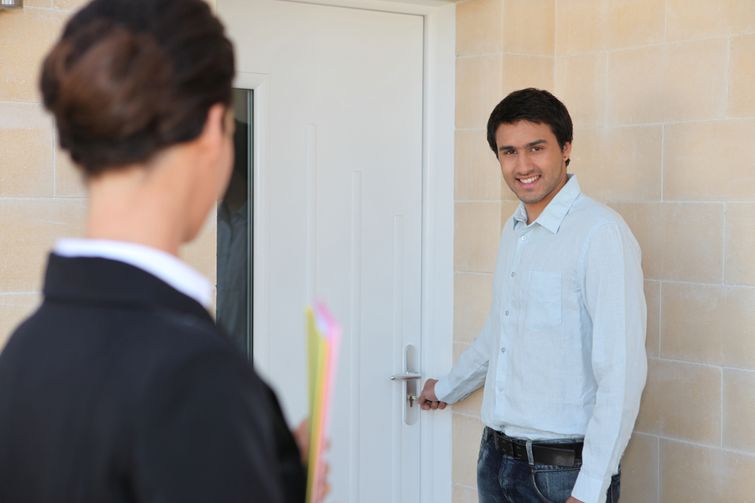The first step in establishing a down payment fund is to identify your goal. How much do you want to save? Do you want to make a bigger down payment so you have smaller monthly mortgage payments?
To help you get started, we explain the two types of down payments below. After, we share 6 ways that you can save money for a down payment.
In Canada, the conventional down payment is 20% of a home's purchase price. That means if you are buying a home with a property value of $500,000, you will need to have $100,000 saved. This is a large down payment that may require years of saving to achieve.
With the rising home prices in Canada, 20% can feel impossible. Thankfully, first-time buyers can opt for a smaller down payment.
Depending on your credit history and financial health, you can qualify for a mortgage with a minimum down payment of 5%.
5% is the minimum amount of down payment allowed. When you choose a 5% payment, it means that your mortgage covers the remaining balance of 95% of the home price.
Opting for the minimum down payment affects your risk as a borrower; lenders tend to mark you as high-risk. As a result, you will have to budget for other payment requirements, particularly insurance.
When you put down money on a home, you will also purchase mortgage default insurance. Mortgage default insurance, also known as mortgage insurance, is a type of insurance that protects your lender if you ever defaulted on your mortgage payments. It is required on high-risk mortgages where the loan is more than 80% of the total purchase price (in other words, buyers had a down payment amount of less than 20%).
If you cannot afford a larger down payment, you will need to budget to buy mortgage loan insurance. The insurance premium varies, but it typically depends on the home price.

At the time of purchase, buyers need to pay more than just their down payment. There are land transfer taxes, real estate agents and legal fees. Budget these costs in with your down payment.
After outlining your financial goals, you will need to create a budget to help get you there. We recommend creating a budget to outline your monthly income, expenses, and savings. Here are some things that you should include:
Your best bet is to work with a financial advisor from Royal Bank, TD, or CIBC to create a realistic budget.
The Government of Canada has many incentives for first-time homebuyers. The Home Buyers' Amount and shared equity mortgage are just a few to name.
The Home Buyers' Amount is a provincial sales tax credit valued at $5,000. It is a non-refundable income credit designed to make paying your taxes easier. The Home Buyers' Amount is available to buyers purchasing a qualifying home.
While many credits like the are not available until after you have purchased a home, they will help alleviate the financial burden of buying a home.
Before you start saving, take a look at your debts. Student loans and credit card debt can pile up and make it have additional money to put away. Potential buyers should pay off their debts before they put away money for a home.
Additionally, a large amount of debt can make it difficult to qualify for a loan. The rule of thumb is that your debt load should not be more than 44% of your gross annual income. Even if you have a large lump sum saved for a house, your debt may disqualify your mortgage application.
When your savings are done manually or in a single TFSA, it can be hard to reach your goal.
Set up a new tax-free saving (TFSA) for your solely for your down payment. A dedicated fund with automatic contributions will keep you on track. You will not have to worry about moving money around, it is all done for you. It's simple, easy, and a great way to build up savings!

Buying a home is a big purchase that costs a lot of money. That is why Canada offers first-time homebuyers an easier way to save and pay for a house.
The Home Buyers Plan (HBP) is a program that allows Canadians to withdraw up to $25,000 from their registered retirement savings plans (RRSP) to either put towards a down payment on an existing home or build a newly constructed home. If spouses are buying together, each can pay $25k out of their retirement plans, providing $50,000 for use.
The Home Buyers Plan is a fantastic opportunity for first-time buyers. It is tax-free, interest-free, and a great way to get one step closer to home ownership. The only requirement is that the money needs to be paid back within 15 years.
Sometimes, you just need more money to save. The best way to find more money is to adopt a more affordable lifestyle. You can save money for a home by making these lifestyle changes:
The first step in establishing a down payment fund is to identify your goal. How much do you want to save? Do you want to make a bigger down payment so you have smaller monthly mortgage payments?
To help you get started, we explain the two types of down payments below. After, we share 6 ways that you can save money for a down payment.
In Canada, the conventional down payment is 20% of a home's purchase price. That means if you are buying a home with a property value of $500,000, you will need to have $100,000 saved. This is a large down payment that may require years of saving to achieve.
With the rising home prices in Canada, 20% can feel impossible. Thankfully, first-time buyers can opt for a smaller down payment.

Depending on your credit history and financial health, you can qualify for a mortgage with a minimum down payment of 5%.
5% is the minimum amount of down payment allowed. When you choose a 5% payment, it means that your mortgage covers the remaining balance of 95% of the home price.
Opting for the minimum down payment affects your risk as a borrower; lenders tend to mark you as high-risk. As a result, you will have to budget for other payment requirements, particularly insurance.
When you put down money on a home, you will also purchase mortgage default insurance. Mortgage default insurance, also known as mortgage insurance, is a type of insurance that protects your lender if you ever defaulted on your mortgage payments. It is required on high-risk mortgages where the loan is more than 80% of the total purchase price (in other words, buyers had a down payment amount of less than 20%).
If you cannot afford a larger down payment, you will need to budget to buy mortgage loan insurance. The insurance premium varies, but it typically depends on the home price.
At the time of purchase, buyers need to pay more than just their down payment. There are land transfer taxes, real estate agents and legal fees. Budget these costs in with your down payment.
After outlining your financial goals, you will need to create a budget to help get you there. We recommend creating a budget to outline your monthly income, expenses, and savings. Here are some things that you should include:
Your best bet is to work with a financial advisor from Royal Bank, TD, or CIBC to create a realistic budget.
The Government of Canada has many incentives for first-time homebuyers. The Home Buyers' Amount and shared equity mortgage are just a few to name.
The Home Buyers' Amount is a provincial sales tax credit valued at $5,000. It is a non-refundable income credit designed to make paying your taxes easier. The Home Buyers' Amount is available to buyers purchasing a qualifying home.
While many credits like the are not available until after you have purchased a home, they will help alleviate the financial burden of buying a home.
Before you start saving, take a look at your debts. Student loans and credit card debt can pile up and make it have additional money to put away. Potential buyers should pay off their debts before they put away money for a home.
Additionally, a large amount of debt can make it difficult to qualify for a loan. The rule of thumb is that your debt load should not be more than 44% of your gross annual income. Even if you have a large lump sum saved for a house, your debt may disqualify your mortgage application.

When your savings are done manually or in a single TFSA, it can be hard to reach your goal.
Set up a new tax-free saving (TFSA) for your solely for your down payment. A dedicated fund with automatic contributions will keep you on track. You will not have to worry about moving money around, it is all done for you. It's simple, easy, and a great way to build up savings!
Buying a home is a big purchase that costs a lot of money. That is why Canada offers first-time homebuyers an easier way to save and pay for a house.
The Home Buyers Plan (HBP) is a program that allows Canadians to withdraw up to $25,000 from their registered retirement savings plans (RRSP) to either put towards a down payment on an existing home or build a newly constructed home. If spouses are buying together, each can pay $25k out of their retirement plans, providing $50,000 for use.
The Home Buyers Plan is a fantastic opportunity for first-time buyers. It is tax-free, interest-free, and a great way to get one step closer to home ownership. The only requirement is that the money needs to be paid back within 15 years.
Sometimes, you just need more money to save. The best way to find more money is to adopt a more affordable lifestyle. You can save money for a home by making these lifestyle changes: